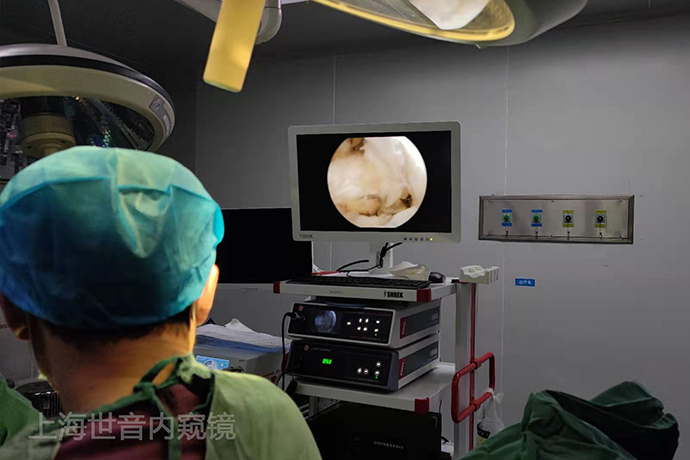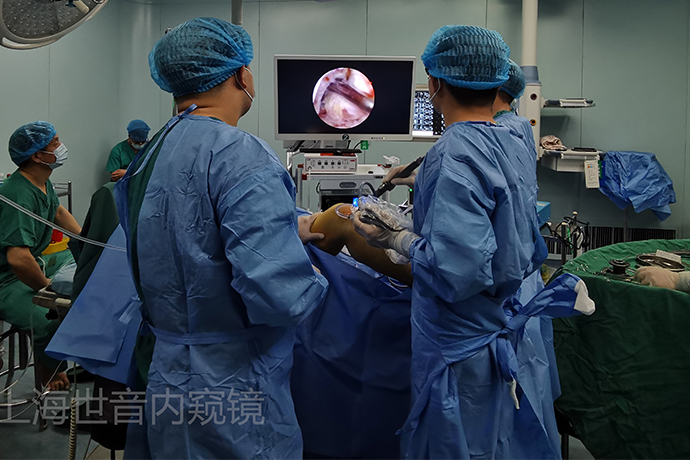【Orthopedic Arthroscopy】Gouty Arthritis
Release time: 14 Jun 2022 Author:Shrek
With the improvement of people's living standards, eating habits vary from time to time, and the number of gout patients is also increasing. Gout is directly related to hyperuricemia, and can be complicated by renal disease. In severe cases, joint destruction and renal function damage may occur, often accompanied by hyperlipidemia, hypertension, diabetes, arteriosclerosis and coronary heart disease. Therefore, the prevention and treatment of gout Without further ado.

In fact, joint pain does not mean arthritis. Arthritis is inflammation in and around the joints. This inflammation can be bacterial inflammation caused by bacteria (requiring antibiotics) or sterile inflammation caused by non-bacterial infection (requiring antibiotics). With non-steroidal anti-inflammatory drugs), accompanied by joint swelling, pain, dysfunction, it is a general term for a class of diseases. Different arthritis has different pathogenesis and different treatment plans. Only by clarifying the exact cause can we get correct, effective and standardized treatment.
Metabolic mechanism: Accelerated purine synthesis, excessive formation of uric acid, and deposition in articular cartilage/bursa/subcutaneous soft tissue.
Pathological mechanism: synovial thickening, pannus and granulation tissue formation, erosion and destruction of cartilage and subchondral bone, resulting in bone destruction and reactive hyperplasia and sclerosis.
Clinical features: 30-50 years old, male:female 5:1.
Clinical staging: slow course, repeated attacks, and progressive aggravation: asymptomatic hyperuricemia, acute gouty arthritis, intermittent gout, and chronic.
Video performance:
The morphology and number of tophi are related to the progression of the disease. Mixed signal, slightly low signal on T1WI (degree of calcification), slightly high signal on T2WI (degree of hydration and fibrosis), enhanced scan can enhance (granuloma)
Soft tissue manifestations Widening of the joint space (synovial thickening, joint effusion), swelling of surrounding soft tissue
Bone Abnormalities Localized/marginal/asymmetric piercing changes, wavy/arc/honeycomb defects with surrounding sclerotic margins
Differential diagnosis:
1. Rheumatoid Arthritis
2. Osteoarthritis: the elderly, knee cartilage degeneration/destruction, and joint edge/subchondral bone regeneration, the formation of pannus is caused by chronic stimulation of bone hyperplasia, the degree is mild, relatively lack of blood supply, is fibrous Pannus, bone destruction more limited, and physical stress.
3. Synovial sarcoma: a soft tissue mass around the joint, involving bone and soft tissue at the same time, the boundary is unclear, the enhancement scan is significantly enhanced, uneven, and the bone is eroded and absorbed.
Under arthroscopy, a large number of tophi crystals were deposited on the cartilage surface and synovial tissue. After the tophi was basically removed during the operation, a drainage tube was placed in the joint cavity for flushing, and normal saline was continuously dripped for flushing. After the patient woke up from anesthesia, the pain in both knees improved significantly.
Arthroscopy is not only helpful for early diagnosis, but also can perform joint debridement together to remove urate crystals deposited on the cartilage surface and synovial surface, and flush the joint cavity with a large amount of saline to remove the urate deposited in the joint cavity. Crystals, reduce inflammation in joints, delay the occurrence of osteoarthritis.
The reason is:
①Joint cleaning and a large amount of normal saline flushing can quickly reduce the content of urate in the joint cavity, thereby alleviating the acute inflammatory response caused by the stimulation of intra-articular structures by high-concentration urate crystals;
②Remove a large amount of inflammatory mediators in synovial fluid;
③The synovial membrane with hyperemia and uric acid crystal deposition was removed, and the production and exudation of inflammatory substances were reduced;
④Tophi is cleaned under the microscope, the damaged area of cartilage is formed, the smoothness of cartilage is restored, and the effect of mechanical wear is reduced.
In short, in order to reduce the content of uric acid in the body, prevent further destruction of joints and soft tissues, and improve joint function, arthroscopic surgery is a more effective method under the premise of adhering to basic and medical treatment. It can not only diagnose and treat gouty arthritis early, but also delay or even reverse the development of gouty arthritis. In addition, arthroscopic surgery also has the advantages of less trauma, quick recovery, and fewer complications. Postoperative pain is quickly relieved, and the treatment course and hospital stay are shortened.
Of course, if gout recurs repeatedly, knee joint gouty arthritis with a long course of disease, and it is not well controlled, it will lead to serious damage to the articular cartilage, and over time, the joint function will be seriously damaged, which will seriously affect daily life.
This condition requires further surgical treatment, such as total knee replacement. Surgery can remove the cartilage damaged by gout, replace the severely damaged knee joint with artificial prosthesis, and restore the function of the knee joint of the patient.

- Recommended news
- 【General Surgery Laparoscopy】Cholecystectomy
- Surgery Steps of Hysteroscopy for Intrauterine Adhesion
- [Gynecological Hysteroscopy] Techniques for Preventing and Treating Complications of Hysteroscopic Surgery
- [Gynecological Hysteroscopy] Hysteroscopic Adhesiolysis
- [Gynecological Hysteroscopy] IUD Removal under Hysteroscopy